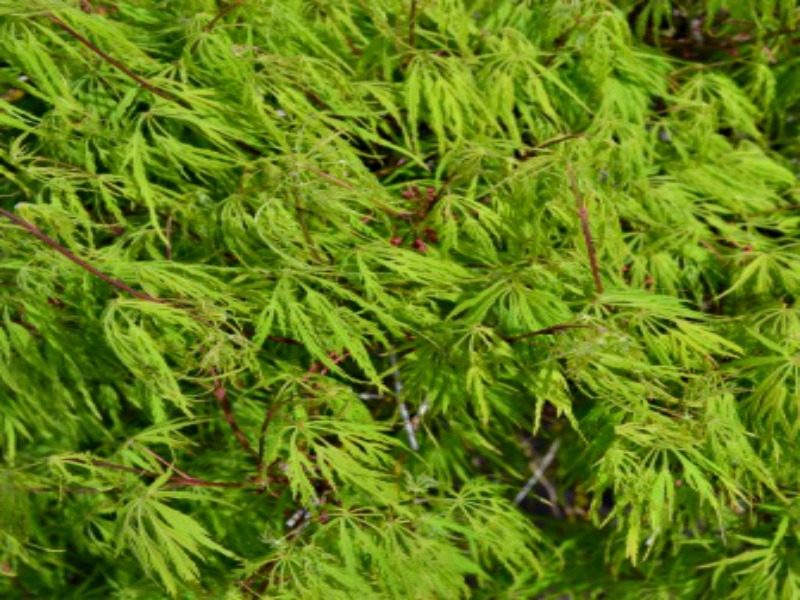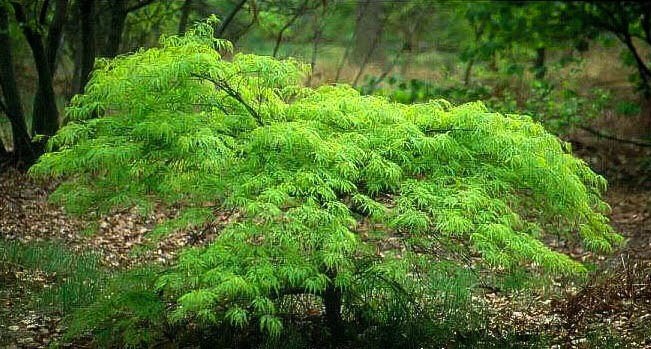

Latest studies have shown that when staking a tree, provide enough leeway so that the tree can move back and forth in the wind. Ties without spacers should be formed into a figure eight to create padding. Buckle-and-spacer ties can be found at garden centers, they are expandable and have a protective spacer. The ties used need to accommodate growth and not cause bark damage with friction. For trees more than 12 feet tall, use two low stakes on opposite sides of the tree or several guy ropes. For windy areas or flexible trees, use a high stake. For most trees, a low stake is preferred, to let the tree move naturally. Generally only trees that are planted in windy, exposed locations need to be staked. Staking is done differently depending on the size and flexibility of the tree, and the windiness of the planting site. A 3 inch layer of mulch will help to maintain soil moisture and studies have shown that mulched plants grow faster than non-mulched plants. Amending your soil with compost will help improve texture and water holding or draining capacity. Most plants like about 1 inch of water per week. Soil is moist without being soggy because the texture of the soil allows excess moisture to drain away. Moist and well drained means exactly what it sounds like. Once a plant is established, the water ring may be leveled, but you should continue to mulch beneath the plant. Mulch over the ring will help to further conserve moisture and prevent deterioration of the ring itself. The height of the mound of soil will vary from a couple of inches for 3 gallon shrubs, to almost a foot for balled and burlapped trees, especially those planted on a slope. The water ring helps to direct water to the outer edges of a planting hole, encouraging new roots to grow outward, in search of moisture. Watering Problems : Creating a Water RingĪ water ring, sometimes called a water well, is a mound of compacted soil that is built around the circumference of a planting hole once a plant has been installed.
#WATERFALL JAPANESE MAPLE HEIGHT FULL#
It is not uncommon for plants that can tolerate full sun or some sun in cooler climates to require some shade in warmer climates due to stress placed on the plant from reduced moisture and excessive heat. These sides also tend to be a little cooler. Shadier sides of a building are normally the northern or northeastern sides. Partial shade can also be achieved by locating a plant beneath an arbor or lathe-like structure. Partial shade means that an area receives filtered light, often through tall branches of an open growing tree. Full shade beneath trees may pose additional problems not only is there no light, but competition for water, nutrients and root space.

Plants that require full shade are usually susceptible to sunburn. Shade can be the result of a mature stand of trees or shadows cast by a house or building. Applications made at that time can force lush, vegetative growth that will not have a chance to harden off before the onset of cold weather.įull shade means there is little or no light in the growing zone. It is best to avoid fertilizing late in the growing season. Excess nitrogen in the soil can cause excessive vegetative growth on plants at the expense of flower bud development. Fertilizers that are high in N, nitrogen, will promote green leafy growth. If one or more nutrients is low, a specific instead of an all-purpose fertilizer may be required. A soil test can determine existing nutrient levels in the soil. Shrubs and other plants in the landscape can be fertilized yearly. Trees need to be fertilized every few years. Take a visual inventory of your landscape.

How-to : Fertilization for Established PlantsĮstablished plants can benefit from fertilization. Look for a fertilizer that has phosphorus, P, in it(the second number on the bag.) Apply recommended amount for plant per label directions in the soil at time of planting or at least during the first growing season. Young plants need extra phosphorus to encourage good root development. Plant Care Fertilizing How-to : Fertilization for Young Plants


 0 kommentar(er)
0 kommentar(er)
